Gentlemen’s Guide: Bangkok’s 5 Best Barber Shops
These top 5 barber shops in Bangkok are where gentlemen can elevate ...
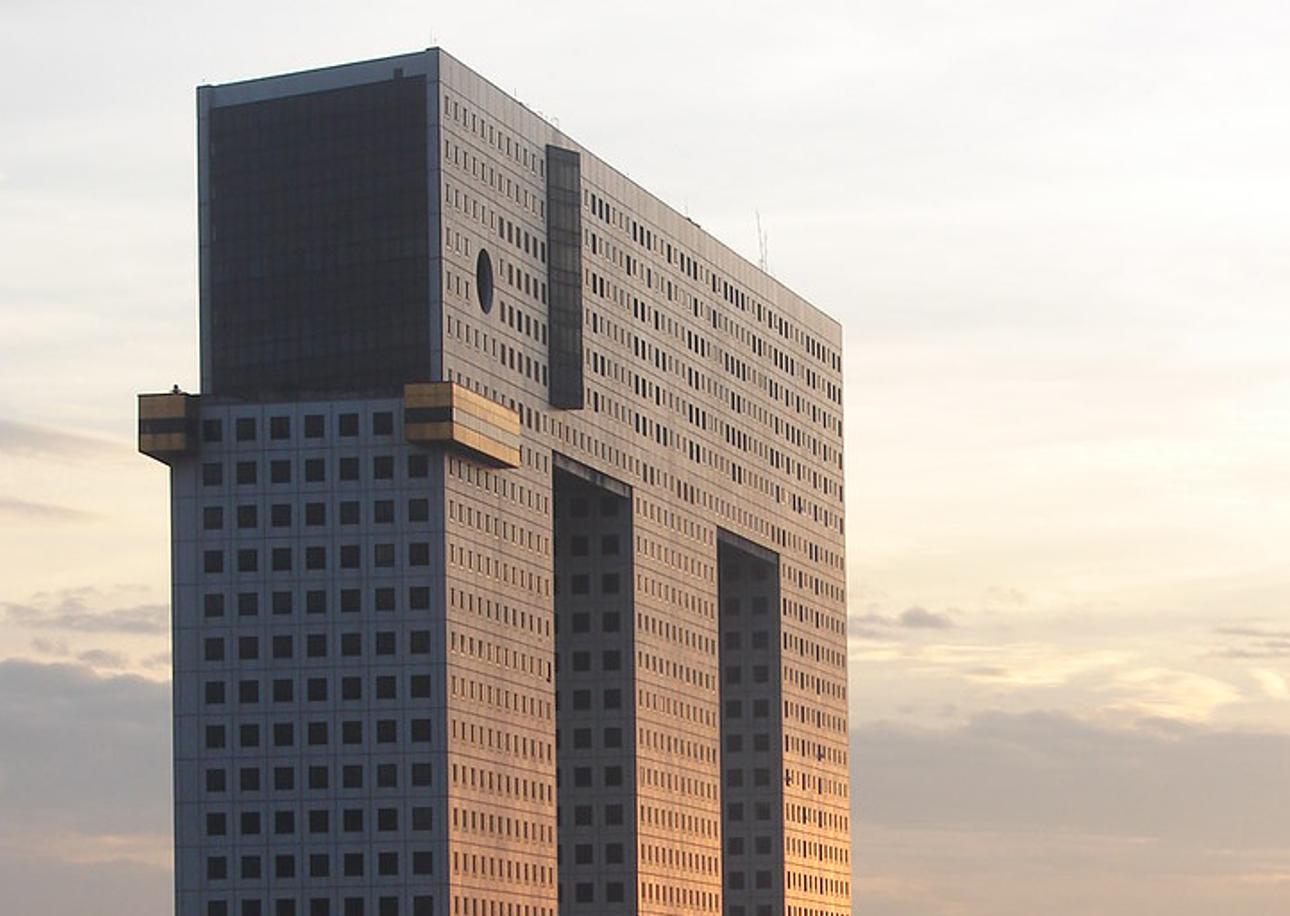
[This story first appeared in Koktail Magazine Issue 3.]
Ask anyone in the world to visualise Thai architecture, and they will most likely picture golden temples, grand palaces, and maybe a few skyscrapers. It’s not an entirely inaccurate image, and it is, of course, a curation we can be proud of. The constructions of our ancestors are some of the most lavish and ornate in the world, but that doesn’t mean our modern-day architects and designers have disappointed—far from
it. Our skyscrapers, gigantic bridges, and unique resorts exude contemporary creative thinking in all kinds of ways. Daring, thoughtful design combined with almost impossibly complex mathematical precision has produced some truly inspirational structures that tell a new story for Thai creativity. Bangkok now boasts some of the world’s most sophisticated skyscrapers, but it’s not just the capital that houses the country’s best architecture. From palatial department stores to tree-top luxury resorts, these modern marvels are building a new visual identity for the nation.
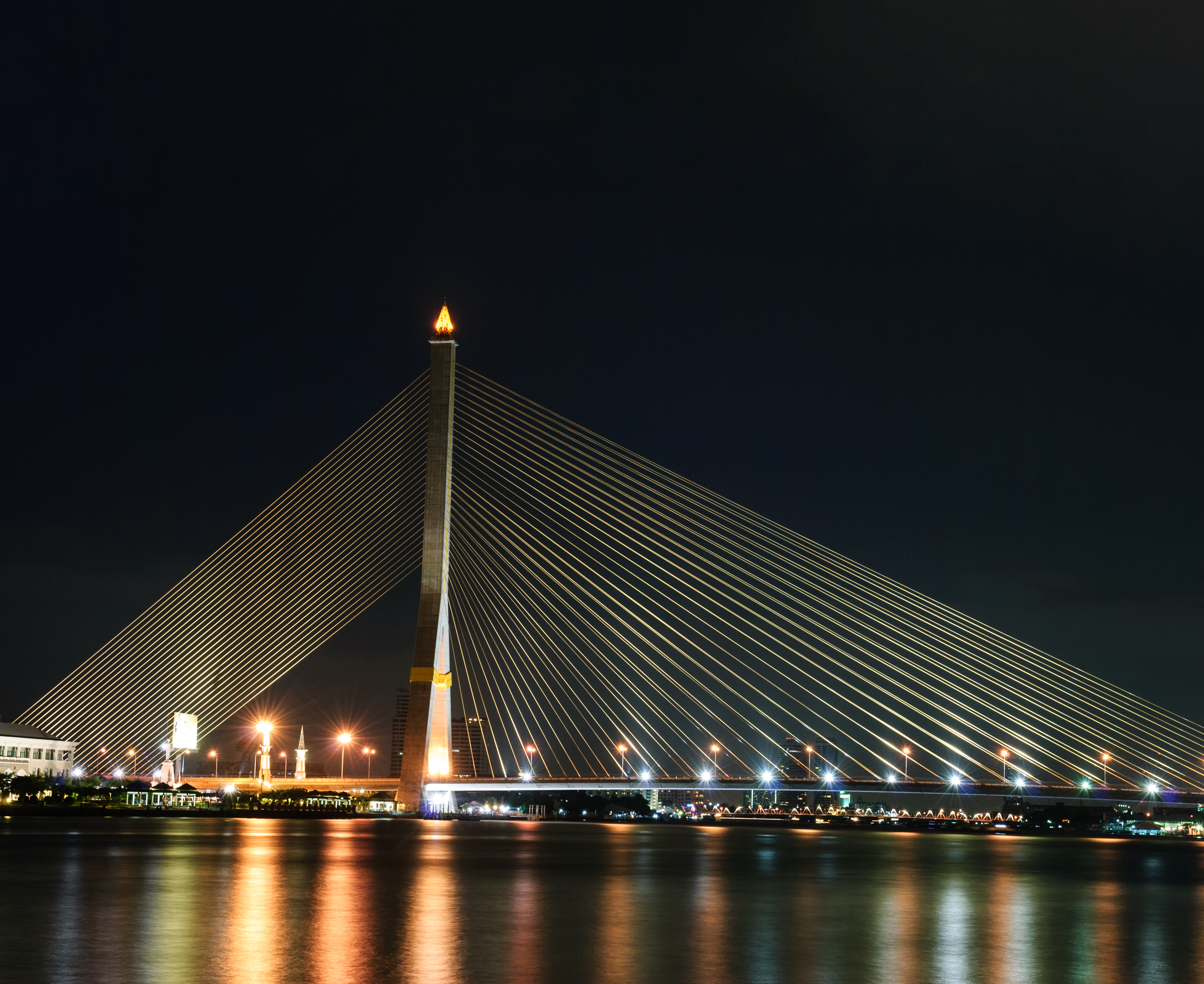
A Bridge Fit For Kings
Not many cities are graced with rivers as majestic as the Chao Phraya, so it is only fair that we do the “River of Kings” justice with equally majestic bridges. Exemplifying this intention in every way, the Rama VIII Bridge is a stunning sight from any standpoint. With a span of 300 metres, the bridge was one of the world’s largest asymmetrical cable-stayed bridges when it was completed in 2002. Its architectural elements include important aspects of Thai history and culture. Lotus motifs appear in the pedestrian railings, while the observation deck—the tallest bridge observation deck in the world—is enclosed in a 15-metre metal frame, in the shape of a lotus bud. Go down to the bottom of the tower and you’ll also see octagonal enclosures, which resemble the feet of an elephant. The idea for the bridge’s construction is in itself something Bangkokians can appreciate: traffic congestion on the crossings between the two sides of the city had become unbearable by the mid-1990s, and it was His Majesty King Bhumibol Adulyadej’s suggestion to build a new bridge to alleviate the congestion. In other words, the city’s traffic could have been much worse if it weren’t for this bridge. Construction started in 1999, and the project was inaugurated three years later on September 20, the birth anniversary of its namesake, the late King Ananda Mahidol (Rama VIII).
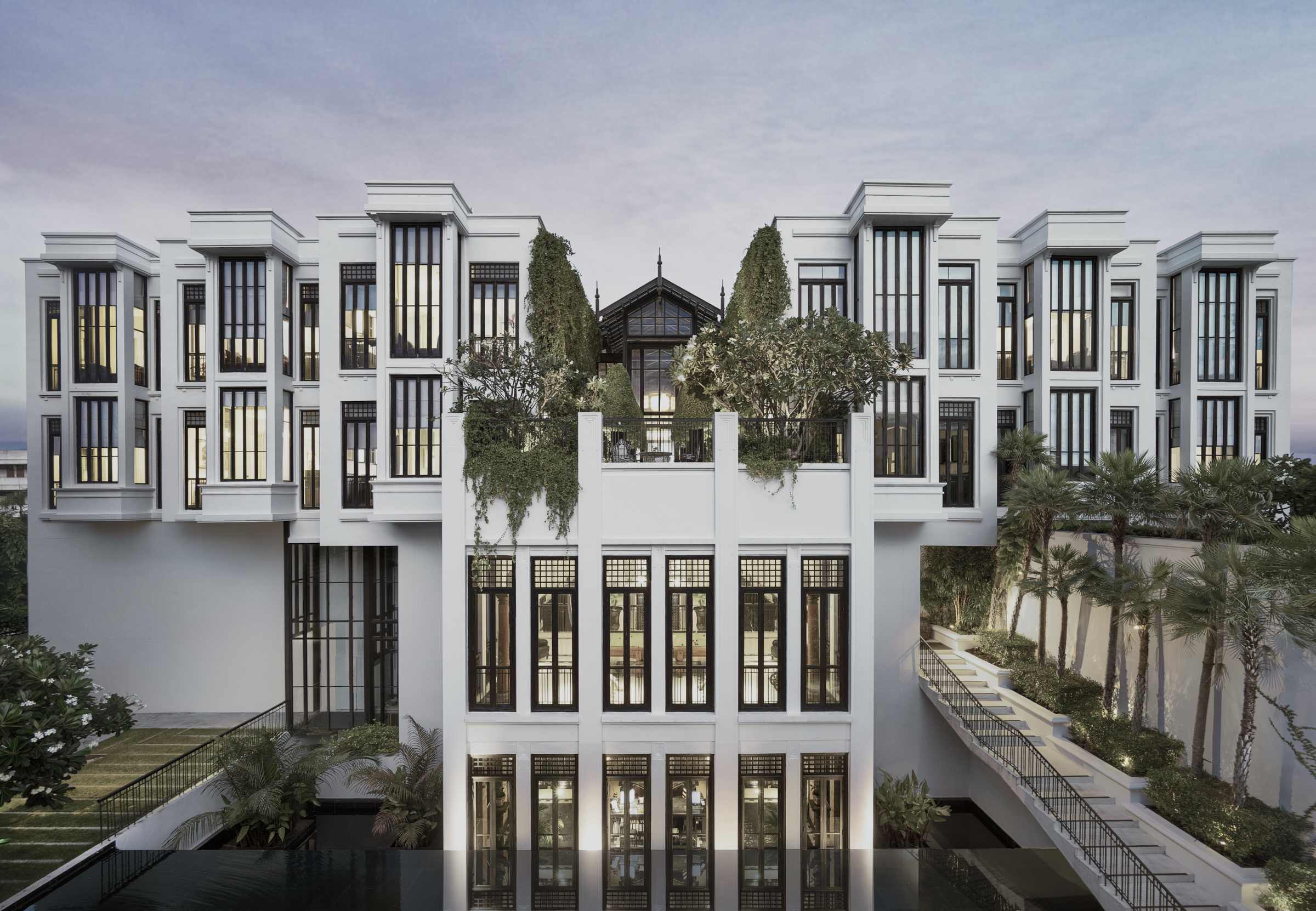
Defining Modern Thai Hospitality
Krissada Sukosol Clapp saw an opportunity with his substantial antique collection and his family’s prime piece of riverside real estate. Bringing in the legendary Bill Bensley to work together on the design for The Siam Hotel Bangkok, they decided that the space had to resemble a museum of fine art, a place fit for housing Clapp’s eclectic items and rare paintings, and it also had to be a work of art itself. With this in mind, lead architect Khemvadee Paopanlerd drew inspiration from Paris’ Musée d’Orsay for the Main Residence, commenting, “My work is an expression of how I wish the world could be: serene, lush in natural beauty, yet quite simple”. Art, nature, tranquillity, and historical culture—The Siam Hotel was to bring all of these together through design. What we see today is a tasteful combination of history and modernity, muted colours and natural textures, and Thai elements and Art Deco accents—all nestled serenely amongst luscious gardens and verdant shrubs.
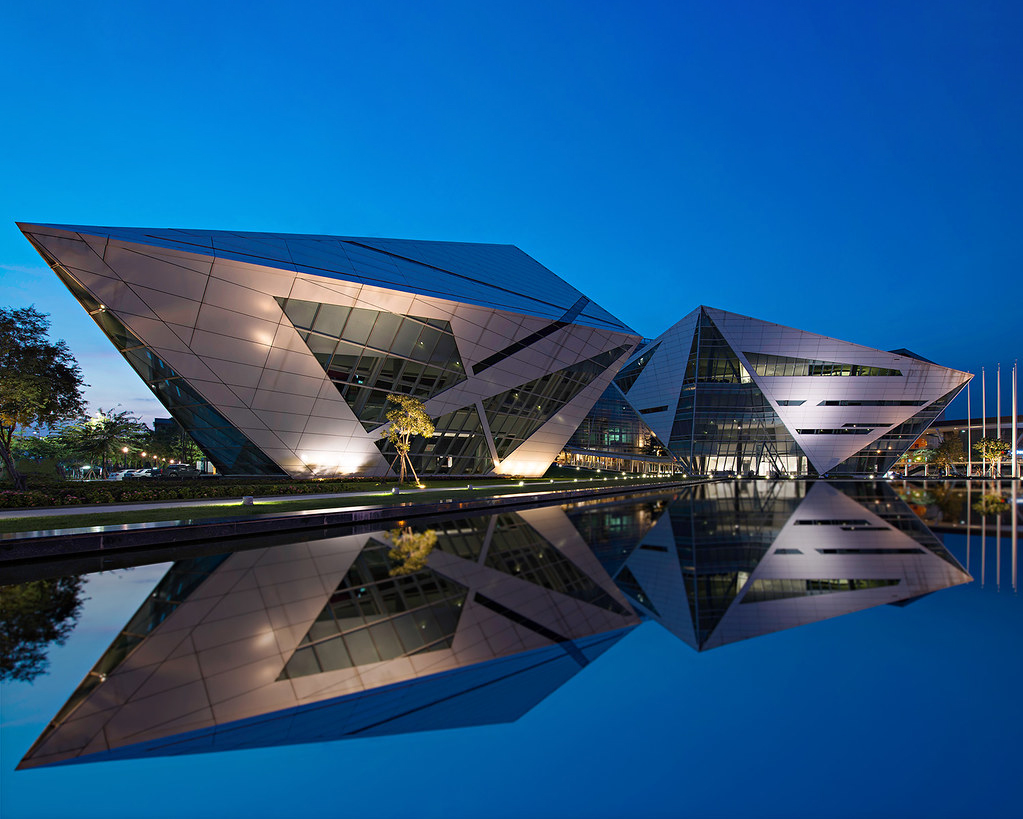
Empowering the Next Generation of Creatives
When touting yourself as the nation’s “Creative University”, you had better be showing, not telling. Bangkok University does just that by using an architectural project as a chance to showcase its expertise in innovation and creativity. Instead of simply building a new campus facility for students, the university designed the complex under the concept of “learning”, illustrated by the analogy of a lapidary process, or in other words, “the formation and polishing of a diamond”. This explains the striking shape of the structure: a large and intricate diamond, which so happens to be the symbol of the university. The new building also serves to unite the front and rear areas of the campus with its visual and functional continuity. As a result, the whole campus has become inextricably intertwined.
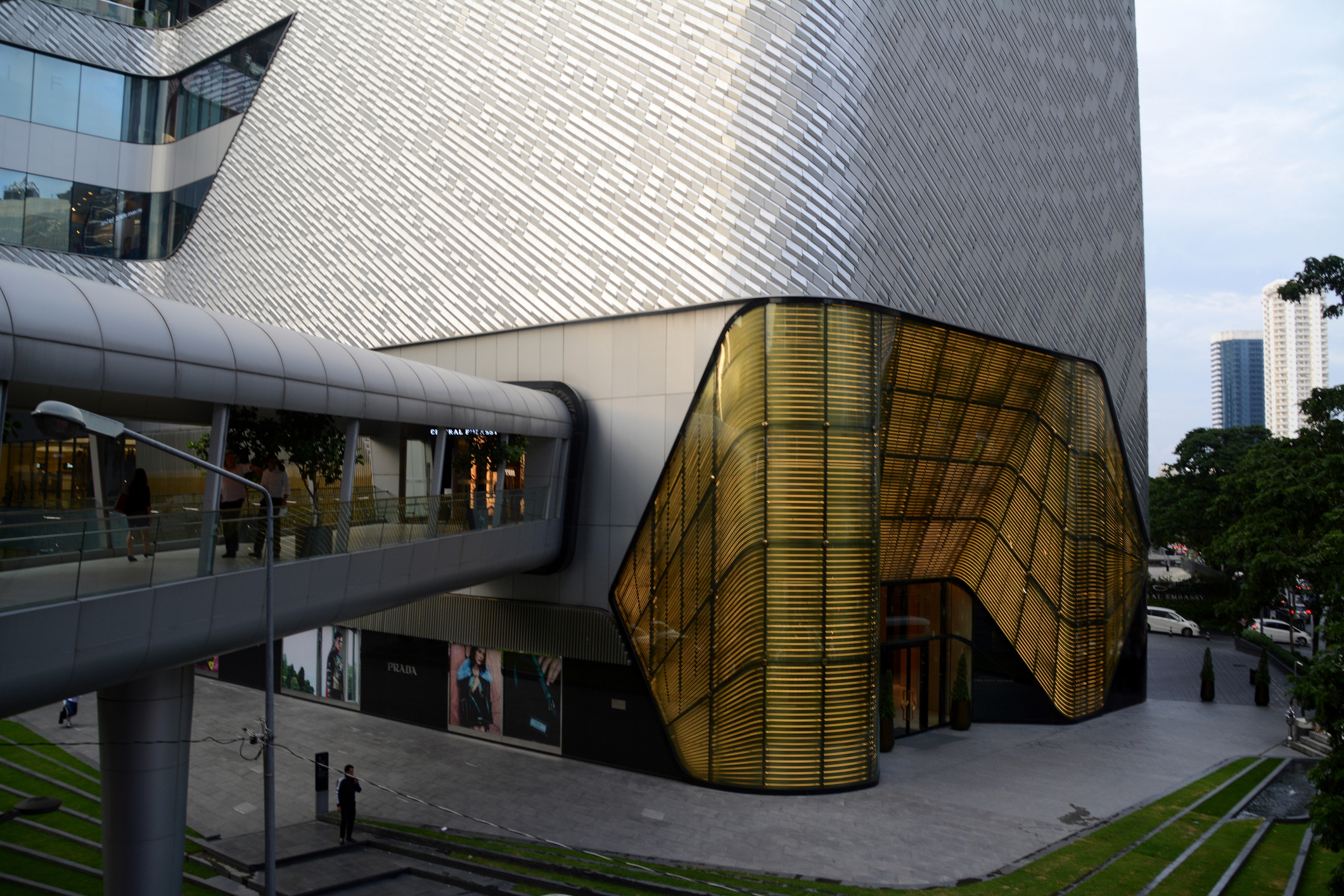
A World-Class Retail Experience
Proud of it or not, we’re a city designed for shoppers. But there’s a reason why people love going to our shopping malls, and it’s not just because of the points cards. Central Embassy is one example of how architectural design has made Bangkok’s retail experience so superior. The luxury shopping destination was a 1.5 million square foot project. It consists of a seven-storey retail space and a 30-storey six-star hotel. The design team carried out extensive research exploring Thai traditional patterns and materials as well as advanced digital design techniques such as scripting and parametric modelling. How many department stores in the world can boast this?
What is most admirable about the final design concept for Central Embassy is its balance of Thai heritage and contemporary digital design. The building is unmistakable as you drive up Wireless Road, a massive coiling structure twisting around two vertical light wells. Ultra-modern and cutting edge from afar, the building’s design holds much more traditional detail on closer inspection. Drawing on motifs and patterns found in traditional Thai architecture, the facade of the building is composed of a dynamic and fluid three-dimensional array of ceramic tiles. The variations in gradients, rotations, and spacings are reminiscent of Thailand’s rich traditional patterns. Attention to detail, cultural references, and state-of-the-art technology make this a deserved landmark for Bangkok.
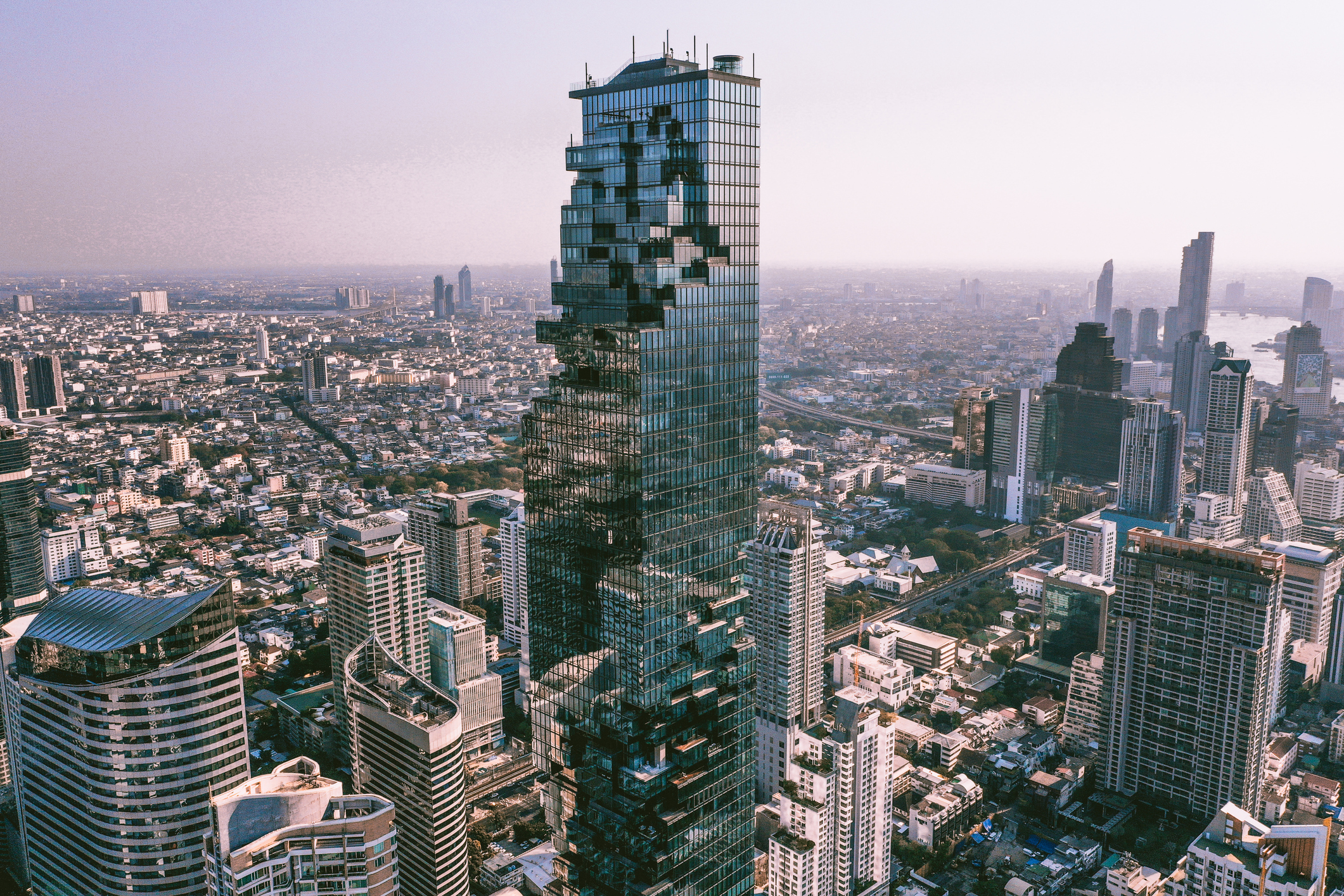
Capital Icon
There’s no discussion about architectural marvels in Bangkok without a mention of the Mahanakorn Building. Eye-catchingly unusual to the point of being socially divisive, what was (until recently) Bangkok’s tallest building commands attention from bottom to top. Flouting all conventional formulas for seamless, inert, urban skyscrapers, the design for the Mahanakorn is deliberately unsmooth, which allows it to actively engage with its city surroundings. The iconic pixelated spiral, carved around the exterior, is a combined representation of the digital age and ancient mountain topography— two contrasting elements that commemorate Thailand’s past and future. This three-dimensional ribbon creates glittering stacked surfaces, terraces, and protrusions that give a more dynamic and complex character to the building.
The Mahanakorn isn’t an exception to critics, however. Some have condemned the pixelation effect for evoking a sense of erosion or looking seemingly unfinished. Since the building is visible for miles across the city, some see it as a bad omen that such an iconic landmark of the city should suggest deterioration. Nevertheless, the Mahanakorn is also said to be a tribute to the uniqueness and diversity of Bangkok. Living up to its name, which means “Great Metropolis”, the scale of the Mahanakorn means it can serve as a microcosm of our myriad urban elements. Interacting with the city from the ground up, the building is made up of separate parts: from Mahanakorn Square, a landscaped outdoor public plaza, to the observation deck 314 metres above the city that houses a three-floor sky bar and restaurant with sweeping 360° views of the skyline and river. In between, we have the Mahanakorn Terraces, the Cube, the Ritz-Carlton Residences, the Tower, and more. The activity of the city is drawn into the site through physical connections to the public transportation network. All of these separate parts render the Mahanakorn a live, socially connected organism. The building reinstates the responsibility of an architectural space to contribute to society as a whole greater than its moving parts, and it speaks for the city’s aspirations to stand in the global spotlight with unique and powerful qualities we can be proud of.
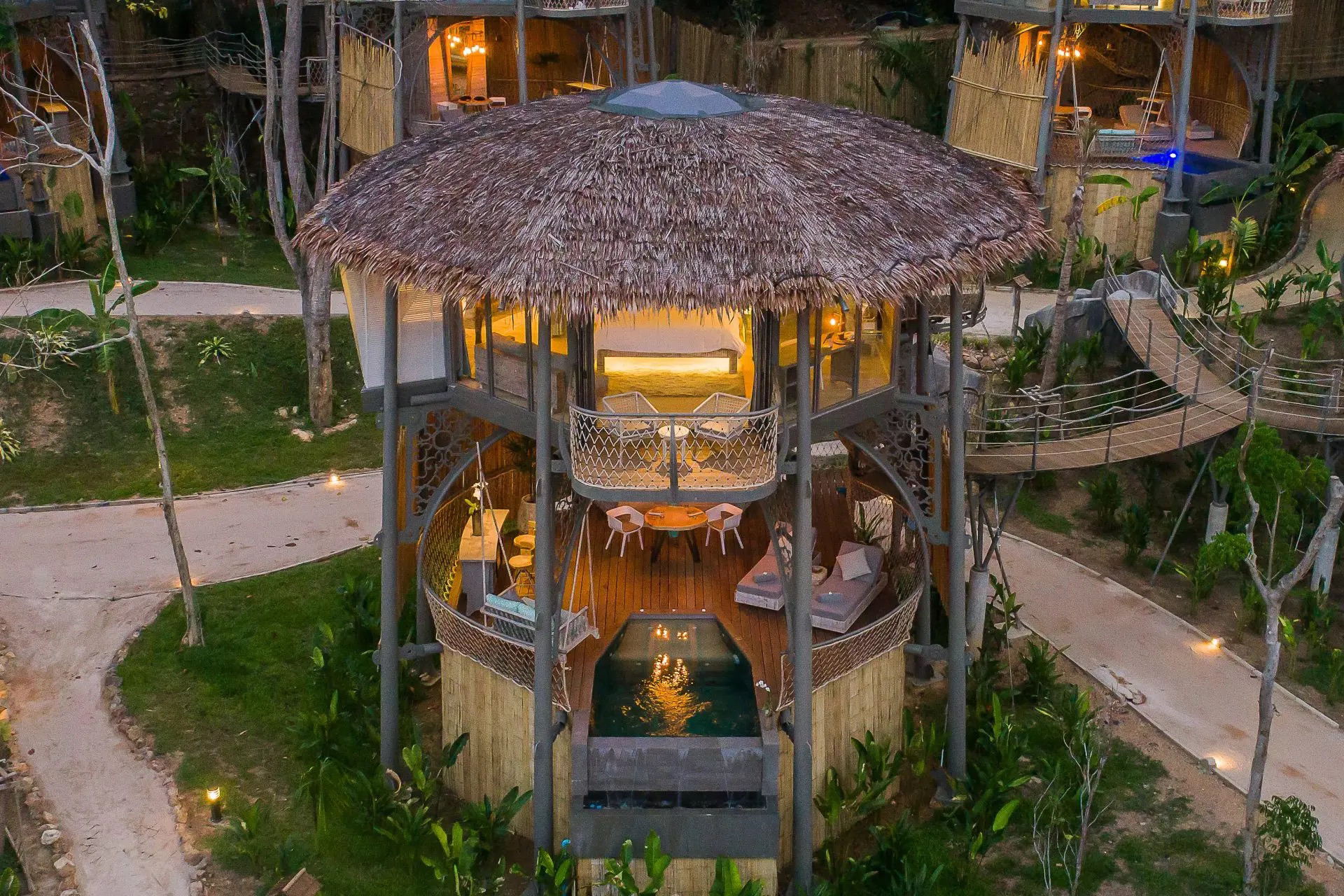
One With Nature
A country as ecologically rich as Thailand inevitably faces a lot of responsibility in conservation. Couple this with a need to build for tourism, and we’re faced with an even bigger dilemma. Balancing the two is not impossible though, as the Tree House Villas on Koh Yao Noi have proven. Its stunning construction atop canopies may just be a match made in ecological design heaven. Sitting in perfect harmony with the surrounding dense tropical foliage, the treehouse villa structures were designed by Josef Raess with the environment in mind. The creative director and co-owner says, “I was looking to create a boutique paradise. I wanted to build with the environment, not impose on it, but blend with it naturally”. The visionary villas seem to fit in like seamless Lego pieces within the trees. The elements of luxury and comfort in a rustic setting serve as a reminder of the beauty and magnificence of nature to all guests.
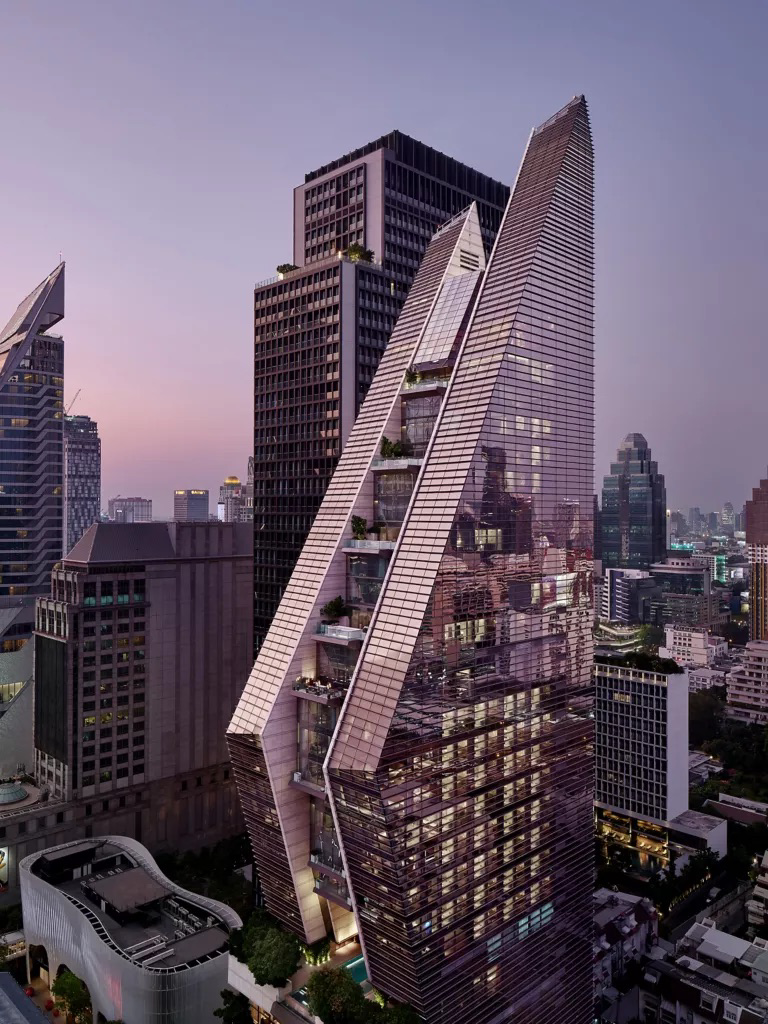
A Tribute to Thai Culture
For what is one of the most striking additions to the city’s skyline, the Rosewood Bangkok’s design has a rather straightforward concept: welcome. With an architectural design that is inspired by the graceful Thai gesture of the wai, the luxury hotel is at once offering the most extravagant greeting to its guests as well as celebrating the culture of its location. The prominent geometric form can be spotted from afar and also provides the hotel with unique opportunities for guestrooms and facilities. Not only is the building culturally representative, but its huge slopes also create terraces, diminishing floorplates, and distinctive occupiable spaces that are exclusive to the Rosewood. The two connected high-rise structures that make the hands of the wai meet to create a central atrium, filled with a lush vertical garden and a dramatic indoor waterfall. It’s reminiscent of the amazing natural landscapes of Thailand, from caves to tropical jungles. Practicality was not left out in this grandiose design of the hotel either; there is a direct link to the adjacent Ploenchit Skytrain Station and functional enclaves for embassies, residences, and offices.
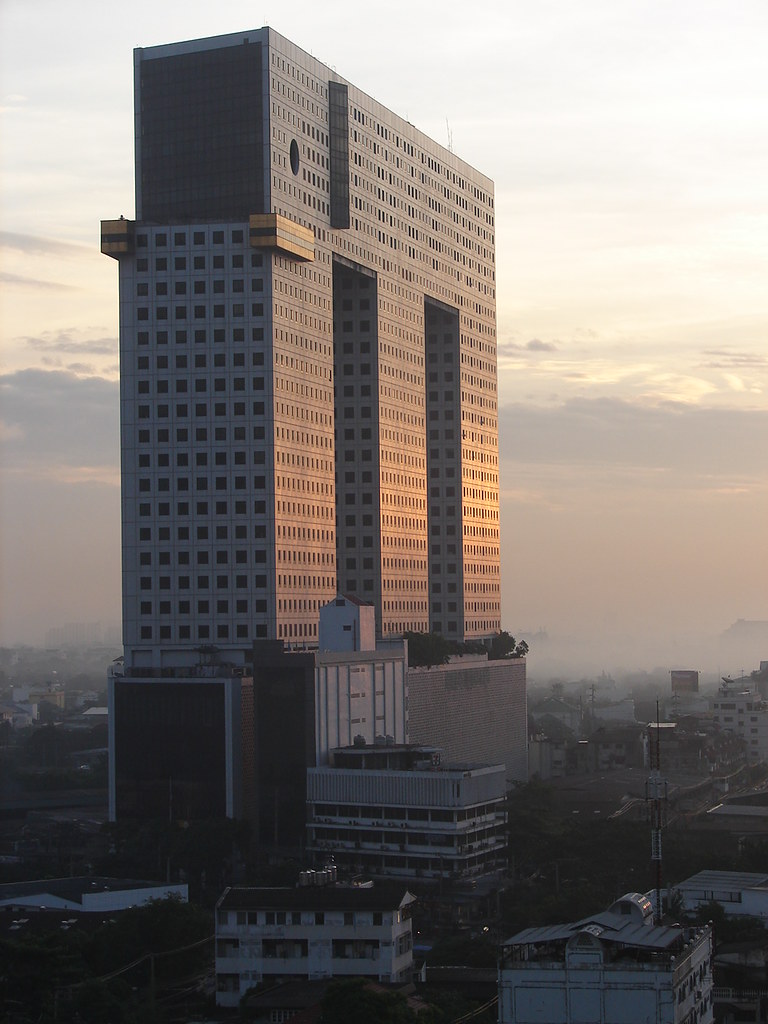
The Power of Symbolism
If creative architecture had an emblem, it would be the famous “Elephant Tower”, formally known as the Chand Building. Constructed in 1997, the building pays tribute to Thailand’s most beloved symbol. Playful in concept and sophisticated in design, the Elephant Tower is made up of three separate towers that are connected through the upper floors, the bridges creating the Elephant’s body. The ears are multi-storeyed balconies, the eyes are huge windows, the tail is made up of 20 storeys of smoked- glass enclosed rooms jutting out of the rear, and the elephant’s tusks are home to the offices of the building’s management company. Altogether 170 metres long and 40 metres wide, its scale certainly does the animal justice. As is usual in Thailand, any design idea for a building is steeped in superstition. The elephant is a symbol of longevity and trust, as well as strength and friendliness. Being an animal that is beloved by Thais of all ages, the elephant was always going to be a crowd-pleasing choice.
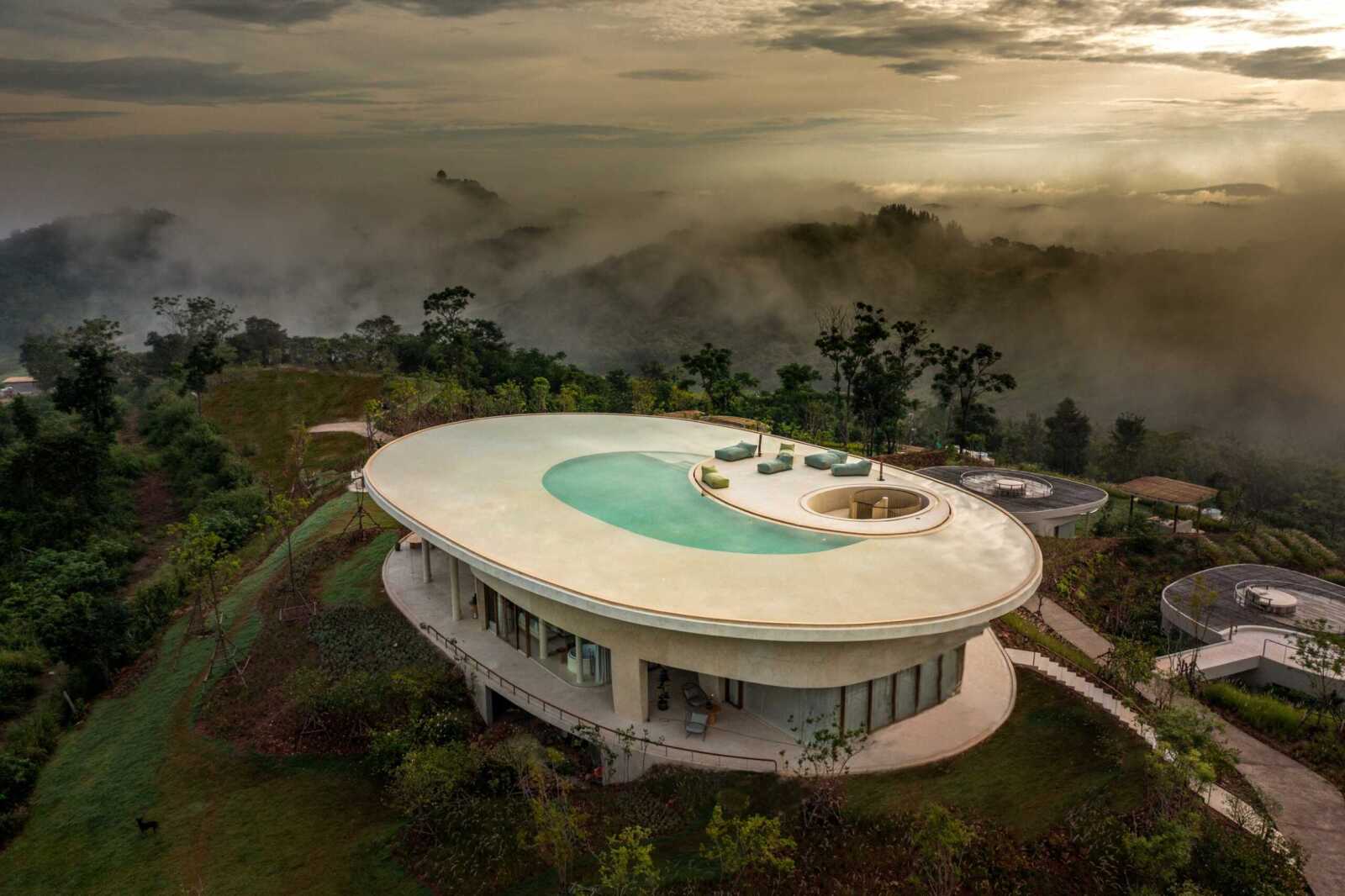
When Less is More
Sometimes, the most impressive part of architectural design is not the building itself, but how the building elevates the appearance of its surroundings—case in point, Sala Khao Yai. The architects from Onion enlisted the sense of wonder and curiosity inspired by the landscape to create the concept for this countryside resort. Using a mass of purple Guinea grass to subtly invite visitors to walk uphill towards the concealed resort, the designers created a sense of suspense and wonder of what’s on the summit. What guests will eventually find is not the usual sight of a resort, but more a simple pavilion standing stunningly in isolation; no rooms, no villas. All of the accommodation is instead hidden behind different peaks of the hill. By allowing nothing but the pavilion and a swimming pool to be visible on the mountaintop, the architecture allows the mountainous landscape to dominate the design and evoke a sense of surreality to the destination. The positioning of the swimming pool is also carefully considered. Linking the water with the horizon of the mountain offers guests a new kind of aesthetic experience. The ironic genius of Sala Khao Yai’s architectural design lies in the dreamlike effect of buildings that are not seen.
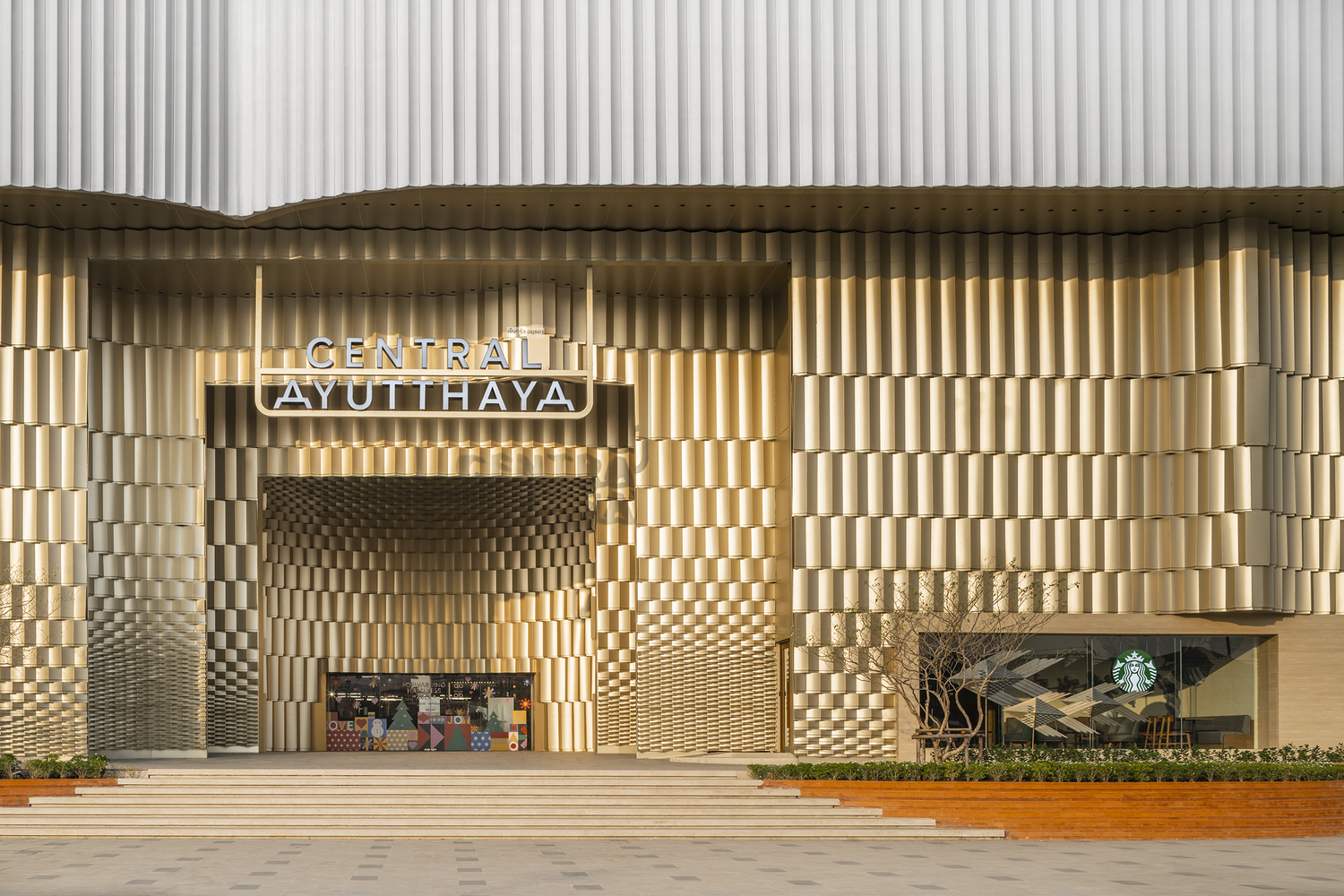
Resurrecting the Past
Always thoughtfully creating bespoke designs for their buildings in different locations, retail giant Central strikes an unusual yet totally harmonious chord with Central Ayutthaya. The architects from Onion had the intention of designing a facade that would somehow symbolise the memory of Phra Nakhon Si Ayutthaya, yet simultaneously work for contemporary life and future developments. The tributes to the old Siamese capital come in two fundamental aspects of the design. First, there is the three-dimensional chom hae geometry, traditionally used on the iconic chedi of ancient temples. The other is the use of local Ayutthaya bricks with white and gold painted plaster. Combining these with contemporary construction techniques and materials, such as aluminium and concrete, the building offers the sense of a walk-in time capsule. Through its design, Central Ayutthaya has somehow placed itself on the historical landscape in a way that is both seamless and eye-catching. The ornate facade, arches, and passageways of the mall contribute to the awe-inspiring experience of visiting the old capital in a refreshing and unexpected way.
These top 5 barber shops in Bangkok are where gentlemen can elevate ...
Pets, as cherished members of our families, deserve rights and protections that ...
Wandering around the globe, try out the signature tastes of cultures across ...
Sailorr and Molly Santana’s black grills fuse hip-hop swagger with homage to ...
Oooh, Pantone just dropped their 2026 Colour of the Year and it’s ...
Pattaraporn “Nat” Salirathavibhaga’s HOMELAND supports farmers through conscious purchasing and bringing agriculture ...
Wee use cookies to deliver your best experience on our website. By using our website, you consent to our cookies in accordance with our cookies policy and privacy policy